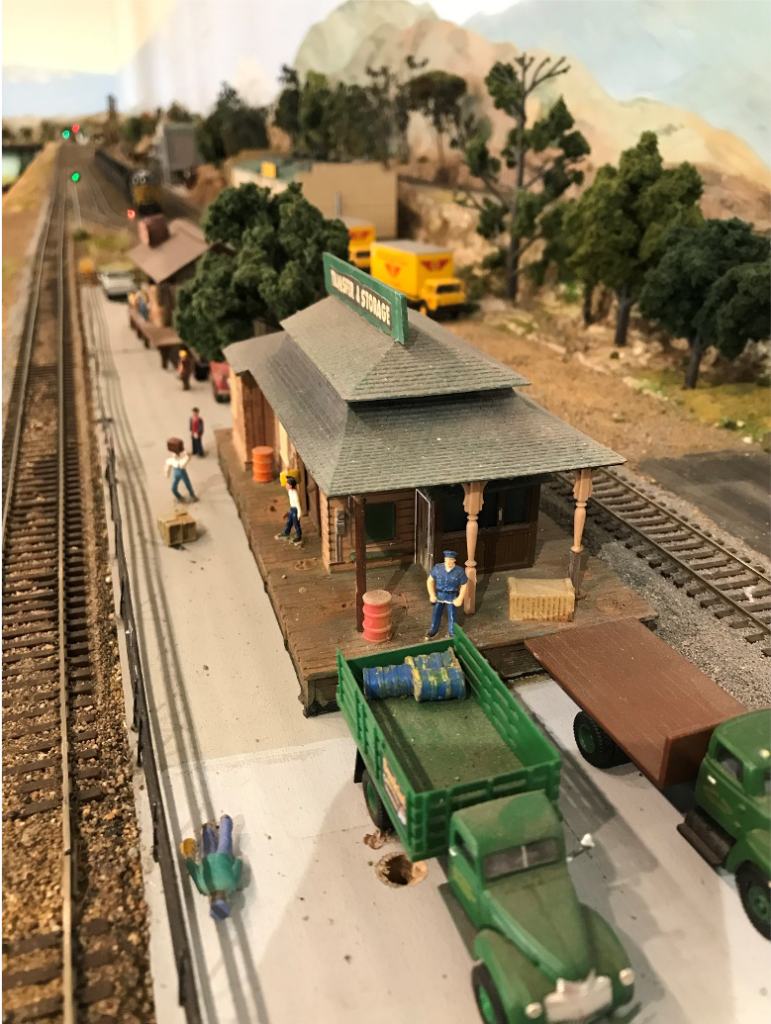Colton is a city in San Bernardino County, California. The town is steeped with railroad history. In fact, it was built by and for the Southern Pacific Railroad (SP) and named in 1875 for David Douty Colton who was an SP Vice President at the time. SP was attempting to construct a second transcontinental line through the southern U.S. On August 11, 1875, the first train ever to reach San Bernardino Valley terminated in Colton.
Colton is the site of Colton Crossing, which until 2013 was one of the busiest at-grade railroad crossings in the United States. At its peak, more than 110 trains used the crossing each day. The crossing was installed in 1883 by the California Southern Railroad, a subsidiary line of ATSF, to cross rival SP tracks while pushing northward from National City to Waterman (now Barstow), California. The SP (now UP) tracks run east-west at the crossing while the California Southern (now BNSF) tracks operate north-south. The lead construction engineer for California Southern was Fred Perris.
The crossing site was the location of one of the most intense “frog wars” in railroad construction history, leading to a personal confrontation between lawman Virgil Earp, Colton’s first city Marshal, and California Governor Robert Waterman.
California Southern engineer Fred Perris, armed with a court order, acquired the crossing section to be built for the CSRR railroad. When the track was delivered to National City in July 1883, SP officials hired the sheriff there to seize the track section to prevent its installation. The sheriff kept the track under 24-hour guard, but Perris’s men were able to retake the track while the sheriff was napping, loaded the track on a flatcar and took it to the crossing site.
The railroad frog is a device to enable the wheels running on one track to cross the rail of a diverging track. It provides continuous channels for the wheel flanges, and supports the wheels over the intersection.
On the morning of September 13, 1883, at the moment when the crossing was set to be installed, an SP locomotive arrived at the scene pulling a single gondola and stopped at the point where the crossing was to be laid. The engineer of the SP locomotive then drove the train back and forth slowly at the crossing point in an effort to prevent the California Southern crew from installing the crossing. Southern Pacific had hired the lawman Virgil Earp to guard its tracks and help stop the installation process. Earp rode in the locomotive’s cab. SP crewmen and supporters lined up on one side of the crossing while California Southern crew and supporters lined up on the other side of the crossing.
Virgil Earp came out of the cab to stand in the gangway between the cab and tender facing the San Bernardino crowd, his revolver in hand. It was believed that the gondola was loaded with SP men with rifles who crouched below the walls of the car out of sight.
The governor told the San Bernardino County Sheriff to enforce the court order. He told SP executives that the locomotive had to get out of the way. He told Virgil Earp that if he made any move with his six-shooter, the Sheriff and his deputies were authorized to shoot. Earp got the message that further resistance was hopeless and would lead to bloodshed. He holstered his weapon and ordered the engineer to move the locomotive away from the crossing sight. The track was cleared and the crossing was installed. The first California Southern train to cross the SP tracks did so on to September 13, 1883.
Over the years, the crossing became a serious traffic bottleneck. On August 28, 2013, the at-grade crossing was officially replaced by a fly-over that raises the east-west tracks over the north-south tracks.

An aerial view of the grade separation. Interstate 10 is visible, running parallel to the flyover immediately to the north.






